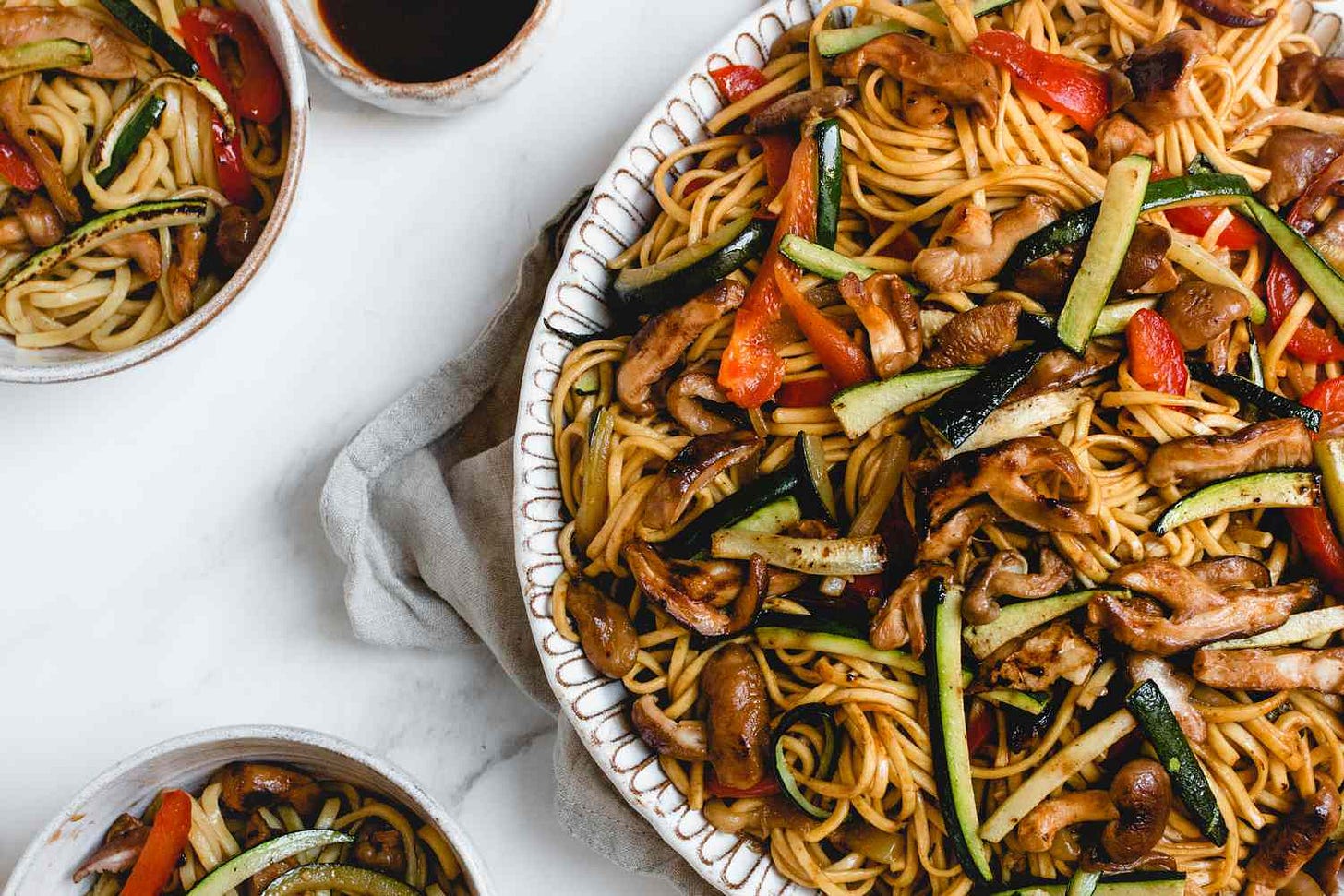Food: International Cuisines in Translation: Chinese: Chow Mein
Mark drove to the Gilded Peacock and brought back cartons of chicken chow mein.
Herb ’n’ Lorna, Chapter 20
Adaptation of Chinese cooking to American palates was a key element in the proliferation and popularization of Chinese cuisine in the United States. Throughout the early 20th century, “Chinese” dishes became sweeter, boneless, and more heavily deep-fried. Broccoli, a vegetable unheard of in China, started appearing on menus, and fortune cookies, a sweet originally thought to be from Japan, finished off a “typical” Chinese meal.
Emelyn Rude, “A Very Brief History of Chinese Food in America,” Time, February 8, 2016 [lightly copy-edited by me, MD]
Chow mein and chop suey are both Chinese stir-fry dishes often found on restaurant and take-out menus. The two may seem similar, but the ingredients, preparation, and origins are different. Chow mein is one of the signature dishes of Chinese cuisine while chop suey is an American creation using Chinese cooking techniques.
These two Chinese restaurant dishes may share similar ingredients, but their concepts are a bit different. Chow mein is an established recipe where noodles are first boiled and then added at the end to a stir-fry of vegetables and sauce, keeping the noodles somewhat soft. In America, restaurants do have a tendency of frying the noodles until crispy.
Chow mein is considered to be a more authentic Chinese dish than chop suey. While the origin of chop suey is not necessarily established, the historical background of chow mein is far less mysterious. Chow mein, (in Mandarin "ch'ao mien") meaning “stir-fried noodles,” originated in Northern China. While the chow mein served in take-outs and many American Chinese restaurants has been altered to appeal to Western tastes, it is based on an authentic Chinese dish of stir-fried vegetables with boiled noodles.
Liv Wan, “ The Difference Between Chop Suey and Chow Mein: Chop Suey vs. Chow Mein: Origins, Ingredients, and Preparation,” The Spruce Eats

See also: Food, Appetite for TG 56; Food, Chicken, Chicken versus Clams TG 44; Food: as Significant Element of a Remembered Incident and Its Literary Reproduction TG 34; Salami TG 135; Food: Preferences: Chicken versus Clams TG 155; Food: In Popular Culture TG 155
Have you missed an episode or two or several?
You can begin reading at the beginning or you can catch up by visiting the archive or consulting the index to the Topical Guide.
You can listen to the episodes on the Personal History podcast. Begin at the beginning or scroll through the episodes to find what you’ve missed.
You can ensure that you never miss a future issue by getting a free subscription. (You can help support the work by choosing a paid subscription instead.)
At Apple Books you can download free eBooks of “My Mother Takes a Tumble,” “Do Clams Bite?,” “Life on the Bolotomy,” “The Static of the Spheres,” “The Fox and the Clam,” “The Girl with the White Fur Muff,” “Take the Long Way Home,” “Call Me Larry,” and “The Young Tars,” the nine novellas in Little Follies, and Little Follies itself, which will give you all the novellas in one handy package.
You’ll find overviews of the entire work in An Introduction to The Personal History, Adventures, Experiences & Observations of Peter Leroy (a pdf document) and at Encyclopedia.com.



